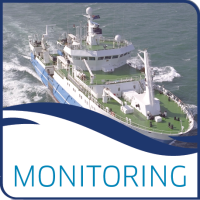The 2017 assessment of the UK's Clean Seas Environment Monitoring Programme described the status and trends of contaminant concentrations and biological effects measurements in biota and sediment at monitoring stations in waters around the UK. Assessments were made for a large number of time series, typically each of a single contaminant in a single species (for biota) at a single monitoring station. The results of the individual time series at coastal and offshore stations were synthesised to assess status and trends at the biogeographic regional level.
Data and Resources
- Biota data used in the 2017 assessment of the UK's Clean Seas Environment Monitoring Programmecsv
The variables in biota_data.csv describe the contaminant and biological...
Preview Download - Biota monitoring stations used in the 2017 assessment of the UK's Clean Seas Environment Monitoring Programmecsv
The variables in biota_stations.csv describe the biota monitoring stations...
Preview Download - Sediment data used in the 2017 assessment of the UK's Clean Seas Environment Monitoring Programmecsv
The variables in sediment_data.csv describe the contaminant data in sediment...
Preview Download - Sediment stations used in the 2017 assessment of the UK's Clean Seas Environment Monitoring Programmecsv
The variables in sediment_stations.csv describe the sediment monitoring...
Preview Download - Clean Seas Environment Monitoring Programme (CSEMP) Regionspdf
Clean Seas Environment Monitoring Programme (CSEMP) Regions used in the 2017...
Download
| Field | Value |
|---|---|
| Publisher | |
| Modified | 2020-01-07 |
| Release Date | 2019-03-21 |
| Identifier | 97220ac5-ac7f-4aed-b357-105d095671b4 |
| Spatial / Geographical Coverage Location | Scotland |
| License | UK Open Government Licence (OGL) |
| Data Dictionary | Data are submitted to the MERMAN database from relevant Competent Monitoring Authorities. A series of templates are populated by submitting officers and submitted to the database which has in-built data restrictions and a data filter to ensure high quality, accurate data are submitted. The data filter has formulae in-built which use Accredited Quality Control information from known standards, limits, standard deviations and/or inter laboratory calibration exercises to calculate a score. Only data that pass a threshold agreed with the national advisory bodies are used for assessments. The data for 1999 - 2016 were extracted from MERMAN on 20 July 2018. Further data checks were made and records with obvious errors were deleted or corrected. The concentration and biological effects data were standardised to agreed units and bases and, in the case of sediment, were normalised to 5% aluminium (metals) and 2.5% organic carbon (organics). The data were grouped into time series, typically of a single contaminant in a single species at a single monitoring station. Time series with no data for the period 2011 - 2016 were excluded. The data archived here are those for selected metals, polycyclic aromatic hyrdocarbons, polychlorobiphenyls, polybrominated diphenyl ethers, tributyltin and its derivatives, imposex (VDS), EROD, bile metabolites and other biological effects measurements. The methods used to assess the individual time series and synthesise the results at a regional level can be found at https://www.bodc.ac.uk/projects/data_management/uk/merman/assessments_an.... The results for the most recent CSEMP assessment can be found at the same location (if the extraction date at the top of the assessment application is later than 20 July 2018, the assessment has been updated). |
| Contact Name | Marine Scotland |
| Contact Email | |
| Public Access Level | Public |


